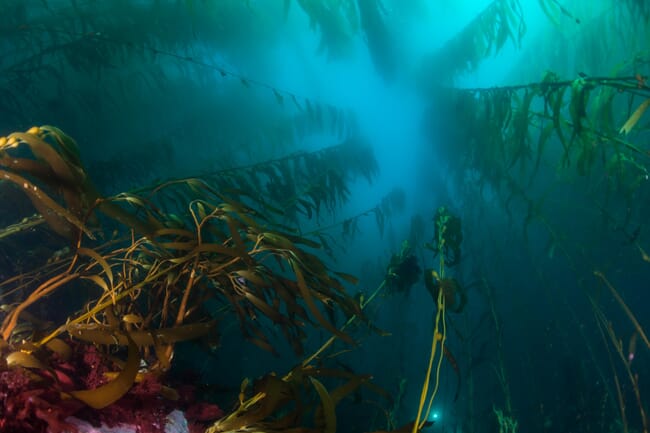
The study identified the seaweed forests of Chile, Australia, the US, New Zealand and Indonesia as having particularly high carbon removal capacity © Conservation International
The discovery led by The University of Western Australia and published in Nature Geoscience, estimated that the world’s seaweed forests transport between 10 to 170 million tonnes of carbon to deep ocean sinks each year.
Seaweed forests, primarily composed of large brown macroalgae such as kelps and rockweeds, are among the most extensive and productive vegetated coastal ecosystem on the planet as well as hotspots of marine biodiversity.
The ocean forests can grow as rapidly as those on land and are efficient in capturing carbon, which is stored in their biomass, before some is transported to deep ocean sinks, effectively removing it from the atmosphere.
Lead author, Dr Karen Filbee-Dexter from UWA’s School of Biological Sciences and the Norwegian Institute of Marine Research, said an important fraction of the carbon could remain sequestered in the deep sinks for at least 100 years.
“Our research highlights the overlooked contribution of macroalgae to oceanic carbon sinks,” she said in a press release.
Methodology
The international team used models to track the fate of seaweed carbon from the coast to the deep ocean. The study estimated seaweed-carbon export below 200 m depth totalled three to four per cent of the ocean carbon sink, which underscored the need to include macroalgae in the depictions of the global ocean carbon budget.
“The study identified the seaweed forests of Australia, the US, New Zealand, Indonesia and Chile as having particularly high carbon removal capacity,” Dr Filbee-Dexter said.
Co-author Dr Albert Pessarrodona said the research was relevant to conservation, because when seaweed forests were lost, the drawdown of carbon stopped.
“Our research highlighted the urgent need to act more quickly to protect, manage and restore seaweed forests, which are being lost at alarming rates in many regions of the world due to a variety of human pressures such as ocean warming, marine heatwaves, nutrient pollution and overfishing,” he said.
“While not a standalone solution, the restoration of seaweed forests could aid in removing carbon from the atmosphere while simultaneously enhancing biodiversity and supporting fisheries, offering a valuable addition to climate change mitigation strategies.”
“Sustainable management of seaweed forests therefore addresses the combined biodiversity, pollution and climate crisis.”


